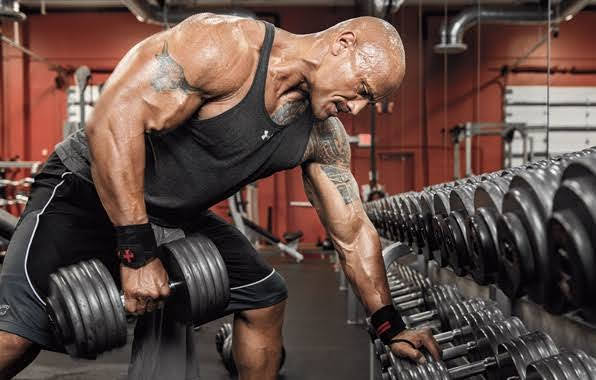The Best Foods to Eat Before and After Workou
Done regularly, exercise can help beat stress, improve your mood, boost metabolism, reduce the risk of cardiovascular disease & Type 2 diabetes, and help you lose weight! But it’s imperative to fuel your fitness with the right pre- and post-workout snacks to give your body what it needs to gain muscle, burn fat and hasten recovery. The right workout foods can help maximise the benefits of all the hard work you put in and stay on track with your fitness goals.
Before a workout
The ideal time to eat is 30 minutes to 2 hours before your workout, depending on what kind of meal you’re eating. A small snack can be had 30 minutes before while a meal should ideally be had 2 hours before you hit the gym. Experts also recommend drinking about 2 cups of water, 2- 3 hours prior, and 1 cup 10 to 20 minutes before your workout.
What to eat
Your pre-workout snack should include carbs, which are energy for the body. They break down into glucose and enter the muscle cells, providing fuel to exercise at maximum capacity. A little bit of protein is a good idea, especially if your routine for that day includes strength training. Lifting weights creates small tears in the muscle fibers, and protein helps the muscles heal and grow stronger.
Peanut Butter Sandwich Peanut butter is a nutrient-rich, calorie-dense food. A tablespoon of peanut butter, rich in fiber and protein, has 90 calories and 8 grams of fat. Combined with whole-wheat bread, it provides your body with the fuel it needs to sustain a tough session. Look for 100% whole-grain, high-fiber bread, which provides you with good carbs.
Banana Known as nature’s power bar, bananas are loaded with digestible carbohydrates and potassium, which aids in maintaining nerve and muscle function. It is particularly recommended as a pre-workout snack for those who exercise in the mornings. Combining a medium banana with 1/2 a cup of yogurt is another option.
Oats A bowl of hot oatmeal, topped with some seeds, is the ideal pre-workout food for those who are planning on engaging in a rigorous workout. The high content of carbs keeps you energised and the fibre ensures gradual release of sugar, keeping your stamina high for long. It also keeps you satiated for longer.
Open Egg Sandwich Two hard boiled eggs, yolk removed, sliced and placed on a whole wheat toast is the perfect way to kickstart your workout. The whole wheat bread gives you energy to fuel your workout, while the protein in the eggs helps with muscle building and repair.
Yogurt with Muesli A study published in the Journal of Nutrition revealed that a high glycemic-index meal like muesli produces smaller spikes in blood sugar and can spike your fat burn. This dry cereal – a combination of toasted whole oats, nuts, fruit, and wheat flakes, is high in fibre and whole grains. Add some yogurt to up your protein intake.
After a workout
It is critical to eat after a workout – to replenish the glycogen that has been depleted during the session. Getting some protein is essential for speedy muscle recovery, and is a must after weight training. Aim for a snack within 20 minutes of your workout and follow it up with a full meal three hours later. A good post-workout meal is high in complex carbs (brown rice, quinoa and millets) and protein (beans, chicken or tofu).
What to eat
Whey Protein Research shows that we need about 1.5 to 2 gram of protein for each pound of body weight. Pick a protein powder that suits your fitness plans and consume immediately after your workout. You can choose from whey, whey isolate or whey hydrolysate powders.
Chicken The chicken breast has a higher protein-to-fat ratio than any part of the chicken and is a great source of lean protein. It provides about 187 calories and 40 gm of protein. Skin the breast to cut half the fat content and enjoy it grilled, broiled or boiled – in a salad, or with a soup or whole-wheat toast.
Smoothies There’s no better way to replenish your body than with a seasonal fruit smoothie. Mix up different variants every day by experimenting with curd, milk, fruits like apples, bananas, oranges, vegetables and nuts. You can blend power smoothies, protein smoothies by adding whey protein, or weight loss smoothies. Green smoothies also provide ample nutrition.
Dried Fruits If you’re constantly on the go and can’t find the time to plan fancy post-workout snacks, a handful of dried fruits and nuts fits the bill perfectly. The nuts provide protein while the dried fruits are chock-a-block with simple carbohydrates. Opt for a mix of almonds, walnuts, pistachios, cranberries, raisins and apricots.
Yogurt & Fruit Just 3/4 cup of curd packs in a nutritional punch – it provides the body with 100-150 calories, 2 gm of saturated fat, 3.5 gm of fat, 20 gm of sugar and about 8-10 gm of protein. Mix it with cereal or with fresh fruit to add the benefits of antioxidants, vitamins and minerals. Use plenty of fresh berries when in season; they contain micronutrients that help fight muscle soreness.






















